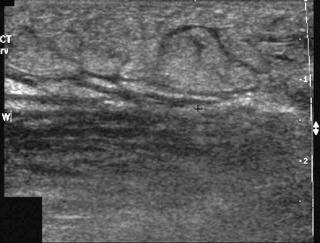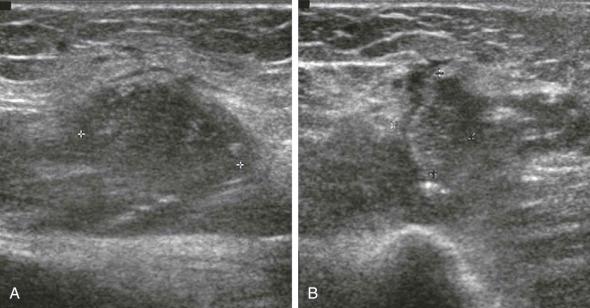Physical Address
304 North Cardinal St.
Dorchester Center, MA 02124
Musculoskeletal infections in children are relatively common occurrences. However, in the pediatric population, such infections may produce nonspecific clinical signs and symptoms and can occur in the absence of clinically apparent features, such as swelling and erythema. This diagnostic challenge is further compounded by the potential inability for a young child to assist in localizing a symptomatic region. Prompt recognition of bone and joint infectious processes is essential because complications, such as alteration of growth, joint destruction, or development of chronic infection, may result in significant morbidity.
Diagnostic imaging plays an important role in the management of children with suspected musculoskeletal infection. It may be used for confirmation of the diagnosis, for localization and definition of the extent of the infection, and to assist in the determination of appropriate medical or surgical treatment. However, imaging must be used only for specific indications with attention to minimizing the inherent potential accompanying risks. For example, one must make concerted efforts to minimize exposure of young patients to ionizing radiation. Bone scintigraphy and CT now have a very limited role in the assessment of pediatric musculoskeletal infections, and acceptable alternative methods, such as ultrasonography and MRI, are being used with greater frequency. In addition, young children often may be unable to cooperate for imaging, and one must weigh the risks of sedation or general anesthesia with the benefits of a diagnostic study. Furthermore, when a diagnosis of musculoskeletal infection is clinically clear, unnecessary imaging may delay definitive management. Ultimately, however, the choice of whether to image at all and by which method may depend mostly on local expertise and accessibility.
Cellulitis is diffuse infection of the skin and subcutaneous soft tissues. As with cellulitis in adults, such infections are most commonly caused by the organisms Staphylococcus aureus and Streptococcus in children. The signs and symptoms of cellulitis are also similar in children and adults and include edema, erythema, pain, and dysfunction of the affected area. In children with cellulitis, imaging is not routinely used, unless there is suspicion of deep soft tissue infection with abscess. When practical, MRI is the method of choice in such patients.
Not only does the superior soft tissue characterization allow rapid detection of soft tissue infection and abscess, but also MRI is useful for differentiating soft tissue infection from osteomyelitis by readily showing potential concomitant abnormalities in osseous structures ( eFig. 68-1 ).

Infected soft tissues demonstrate decreased signal intensity on T1-weighted sequences and increased signal intensity on T2-weighted and short tau inversion recovery (STIR) sequences. Abscesses appear as focal fluid intensity collections with surrounding or rim enhancement after intravenous gadolinium diethylenetriamine pentaacetic acid (Gd-DTPA) administration.
On ultrasound examination, infected skin and subcutaneous tissues often appear thickened and demonstrate increased echogenicity. Subcutaneous edema may be manifested as thin anechoic or hypoechoic strands of fluid between fatty lobules in the interlobular septa, causing a “cobblestone” appearance. Hyperemia may be detected, using color Doppler imaging. Focal tissue inflammation without abscess formation (phlegmon) appears as a focal area of increased echogenicity. Although abscesses are usually anechoic or hypoechoic, abscess formation may be overlooked if the contents of the abscess cavity are isoechoic or hyperechoic to surrounding tissues. Swirling of the contents by exerting pressure on the transducer and lack of vascularity are indicators of necrosis and liquefaction (see eFigs. 68-2 and 68-3 ).


Because of the high radiation dose of CT, its use should be restricted to children in whom MRI is contraindicated or unavailable.
CT examination of children with cellulitis will show thickening of the skin and subcutaneous tissue with increased attenuation of fat, which may appear septated. Abscesses are rim-enhancing collections that often contain septa and have varying wall thickness.
Radiographs are generally nondiagnostic in cellulitis, although soft tissue swelling may be apparent.
Pyomyositis is a primary bacterial infection of skeletal muscle that is not secondary to contiguous infection of skin, bone, or other soft tissue. It usually affects adults between 20 and 40 years of age, and pyomyositis in children occurs almost exclusively in tropical or subtropical climates. Muscle enlargement with focal intramuscular inflammatory changes are observed using MRI. The inflamed muscle is of low signal intensity on T1-weighted sequences and high signal intensity on T2-weighted and STIR sequences. Enhancement of the area after intravenous Gd-DTPA is characteristic. Abscess formation may occur.
Become a Clinical Tree membership for Full access and enjoy Unlimited articles
If you are a member. Log in here